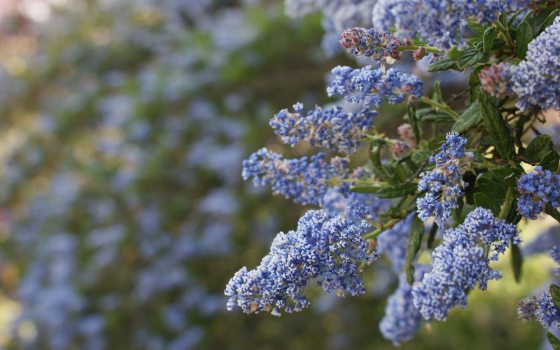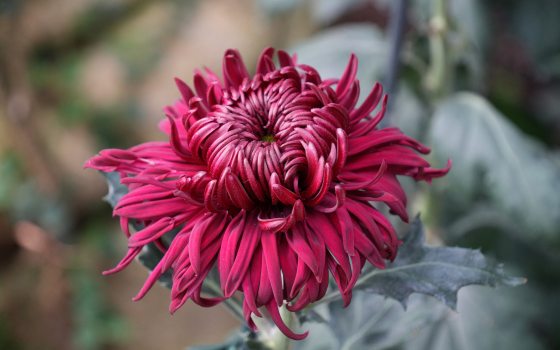It's especially vibrant this time of year with sparkles of unique flora emerging around every corner of the Gardens and Conservatory. There aren't many other places in the world (let me know if you know of any) that have massed so many BLUE flowers together in one place. Blue is a color in horticulture that is exhibited in the least quantity in our floral kingdom. So many words describe this mysterious color, including: powder, porcelain, gentian, cerulean, cornflower, sapphire, navy and lilac! These colors can range from "true" blue to blue-green (turquoise) and blue-purple (violet). Longwood's staff has scoured the world for some of the most accurate blues, and I'd like to share some of my favorites with you.
Late March and early April is a time when people are ready to get out of the house and explore the outdoors after all the snow has melted and tiny springtime treasures begin to emerge. At Longwood Gardens we're just bursting at the seams with beautiful flowers 365 days of the year! It's especially vibrant this time of year with sparkles of unique flora emerging around every corner of the Gardens and Conservatory. There aren't many other places in the world (let me know if you know of any) that have massed so many BLUE flowers together in one place. Blue is a color in horticulture that is exhibited in the least quantity in our floral kingdom. So many words describe this mysterious color, including: powder, porcelain, gentian, cerulean, cornflower, sapphire, navy and lilac. These colors can range from "true" blue to blue-green (turquoise) and blue-purple (violet). Longwood's staff has scoured the world for some of the most accurate blues, and I'd like to share some of my favorites with you.
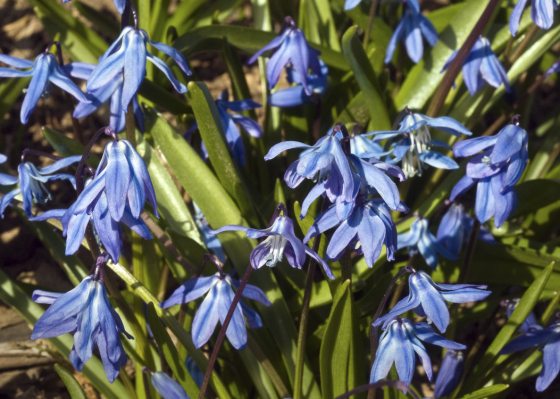
Topping the charts are the nodding heads of Scilla siberica, or Siberian squill. This plant, like so many of its gentle- hued counterparts, hails from very cold parts of the world—specifically western Russia to northern Iran. Longwood Gardeners have planted literally hundreds of thousands of these tiny bulbs over the years to deliver the display you enjoy today! The best time to enjoy this display is mid- to late-March. In the Conservatory we have many non-hardy specimens of blue-hued flowers from warmer climates.
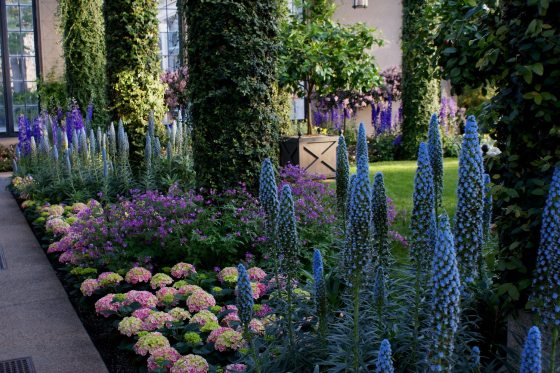
My favorite right now is Echium candicans 'Select Blue'. This native of the Mediterranean region (specifically the Canary Islands and Madeira) is a biennial that we grow from cuttings. It takes a little more than a year to get a new cutting to the size of the plant you see on display. Since these plants blossom in late winter and very early spring, they aren't suited to be grown outdoors in our region, but they thrive in coastal California! I don't know many gardeners who haven't tried their luck with Delphinium 'Blue Bird'. It's part of the Pacific Giants mix, and from this description you might well imagine that it prefers cool temperatures. The original species is native to Siberia and has given rise to both English and American hybrids. In the Conservatory we display these beauties from Mid-March through April. Protection from wind and rain is one of the key areas to concentrate on when trying to grow perfect specimens.
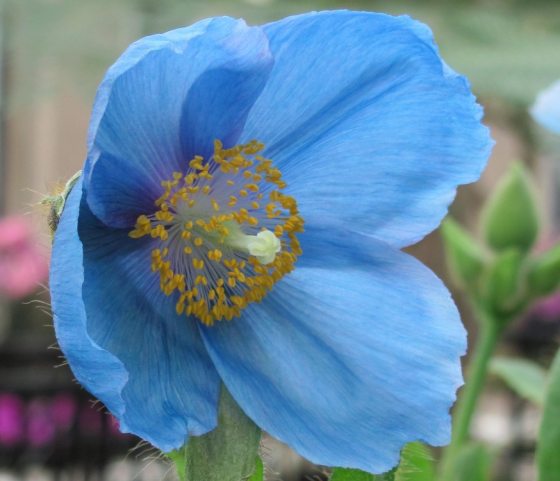
The rock-star of the Conservatory in March is Meconopsis x sheldonii 'Lingholm'. We fly this plant in from Alaska in October when it begins to go dormant in its natural habitat. We pot them up in mid-winter and grow them in a very cool greenhouse heated to only 45-50 degrees until they come into flower in March. Their extravagant display lasts only a total of 3 weeks, but it is well worth the time (and frequent flier miles) to get them here!
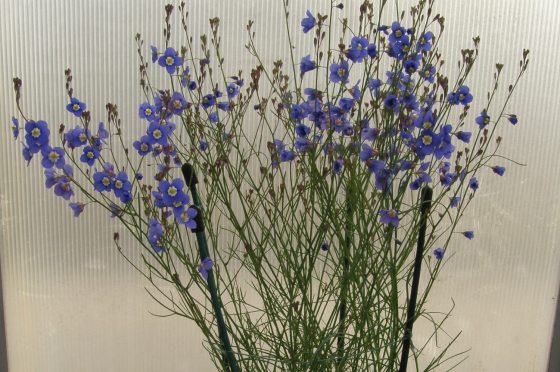
If you enjoy eating mustard greens then you know that the flowers of older plants are typically a bright yellow, but Heliophila coronopifolia from South Africa is a member of the family with the most delicate blue flowers imaginable! These plants don't appreciate hot or humid conditions so, again, we grow them in the cool Conservatory for winter enjoyment.

In the Mid-Atlantic region we are fortunate to have fragrant lilacs blossoming in spring, but in California the climate isn't typically cold enough in winter to have them flower. There is a California native plant called Ceanothus 'Ray Hartman' whose common name is California lilac. Now, this plant does lack the traditional scent of our familiar flowers, but it makes up for the lack of scent with the profusion of true blue flowers produced in mass on these evergreen shrubs. Sadly, the plant is not hardy in our area so only Conservatory specimens can be enjoyed in late winter and early spring.
Tucked quietly in a corner of the Garden Path is Lithodora diffusa 'Grace Ward'—another Mediterranean native to Spain and Portugal. It doesn't prefer hot or humid conditions (like our typical summers) so you typically will find this plant vacationing in the Pacific Northwest while in the States. Common near moist streams in the woodlands are forget-me-nots. Myosotis ' Blue Bird' gets its name from the seeds which will stick to socks, jeans and fur to be carried to the next location. Once you have a few of these in the right spot then you won't be 'forgetting' it again! It can be quite content in moist soil with bright diffused light.
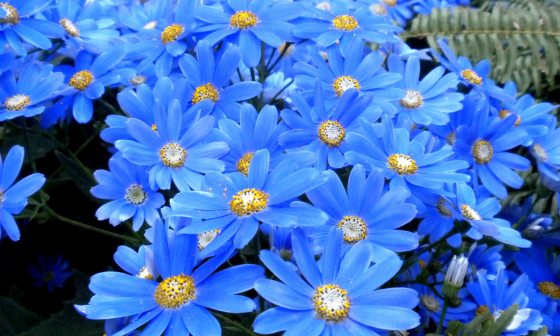
Lastly, I can't go without sharing Longwood's own blue cineraria, Pericallis x hybrida. Our research staff worked for almost a decade trying to get the very short commercial Cineraria to grow taller to match the grandeur of the Conservatory, while preserving the periwinkle blue that is so prized in the plant world. This native of the islands off the coast of Portugal grows a rosette of foliage all winter and then explodes with a profusion of blue daisies that cover the top to the point there is very little green showing! These Mediterranean beauties go to seed when it gets hot, so come and enjoy them at Longwood while they last! You won't see this plant displayed like this anywhere else in the world!
